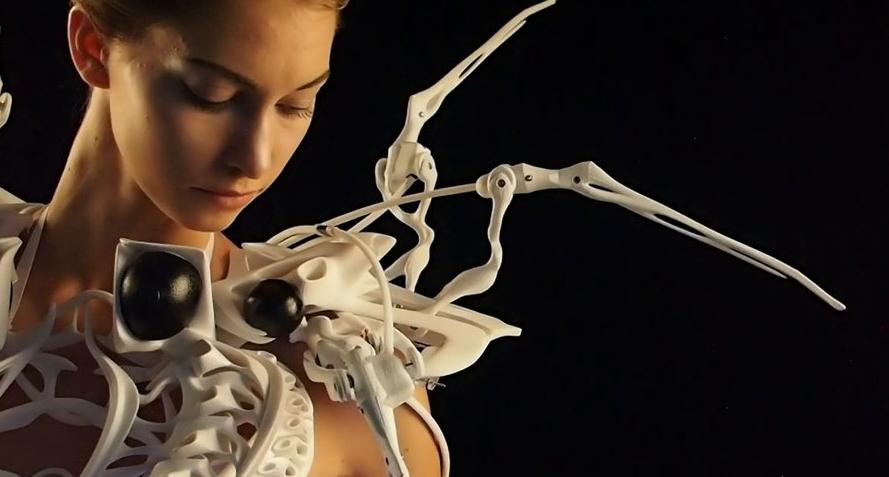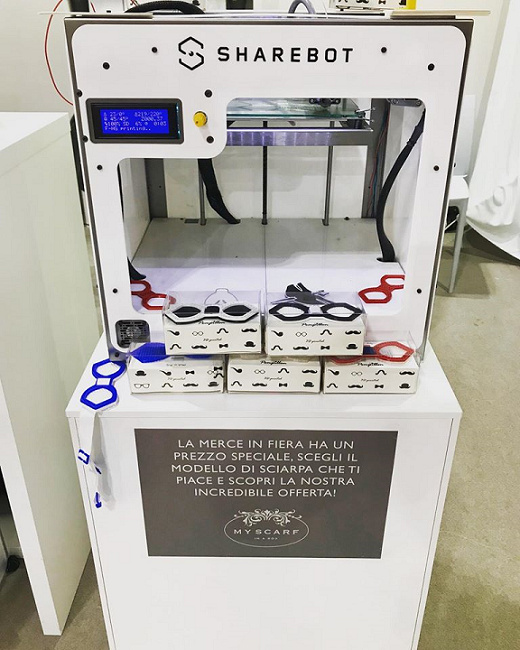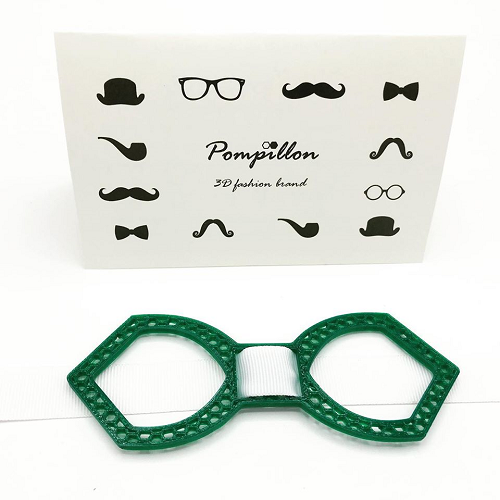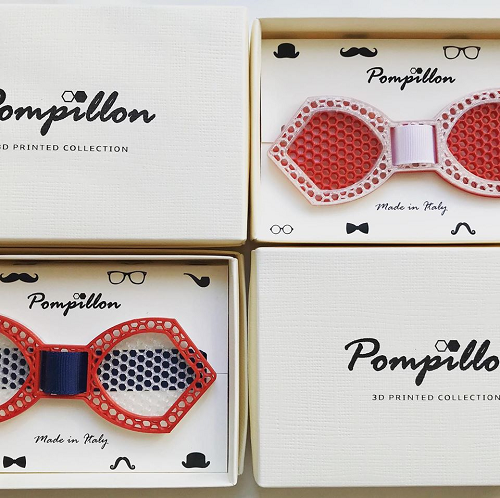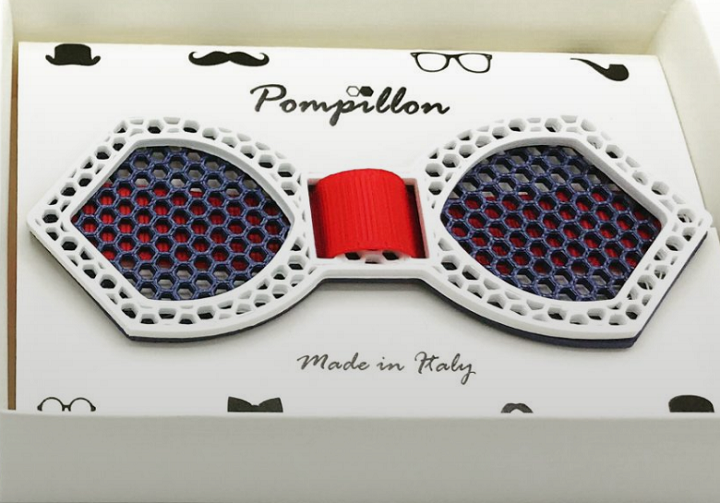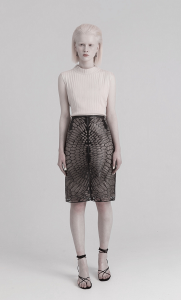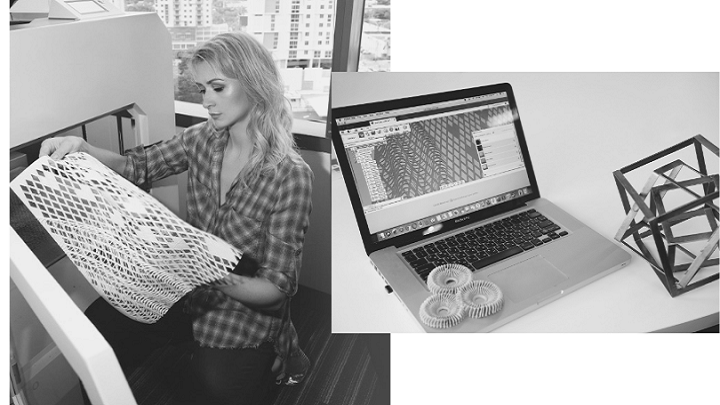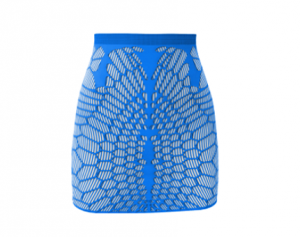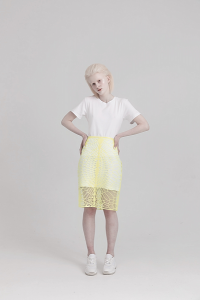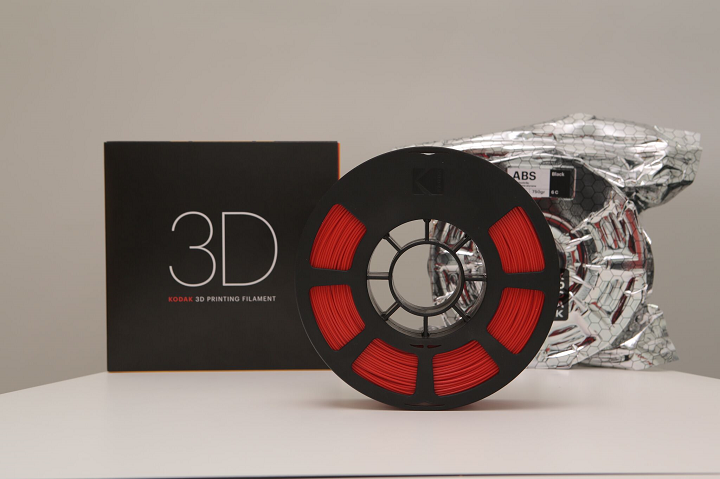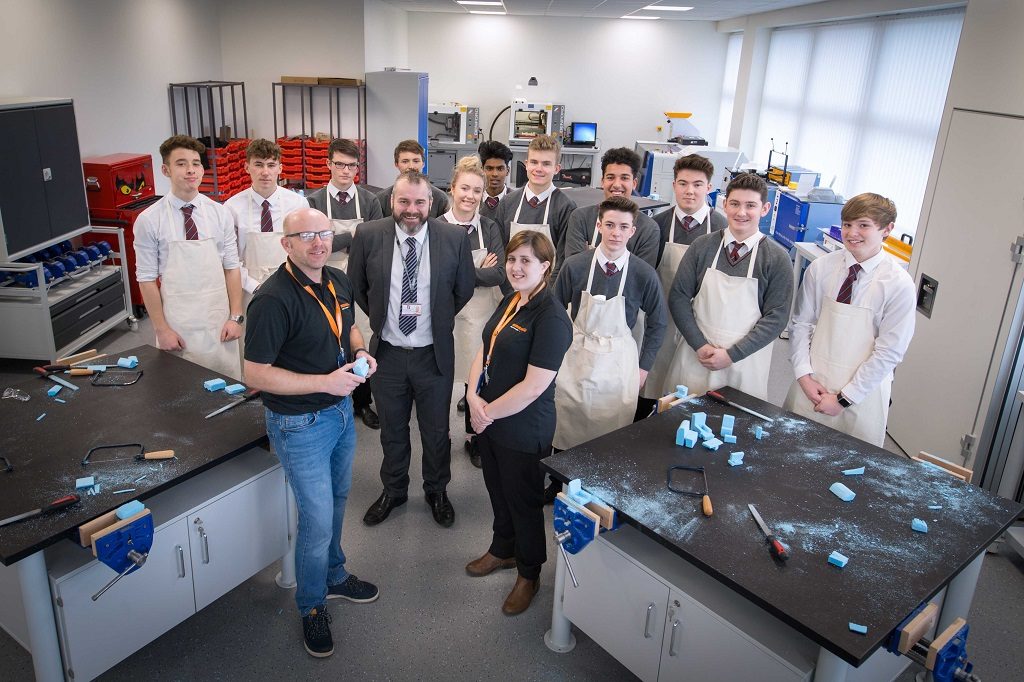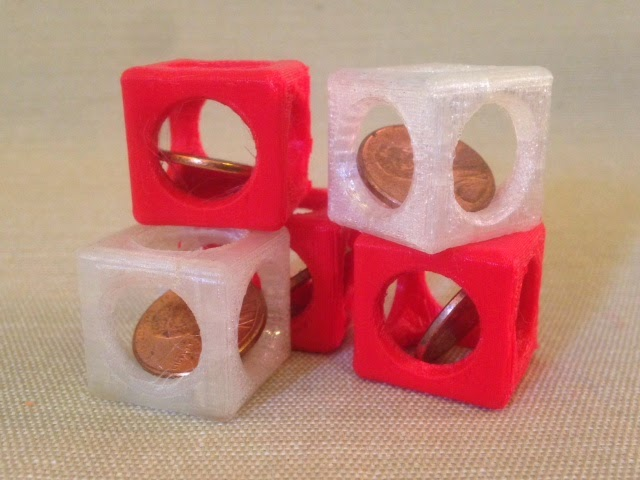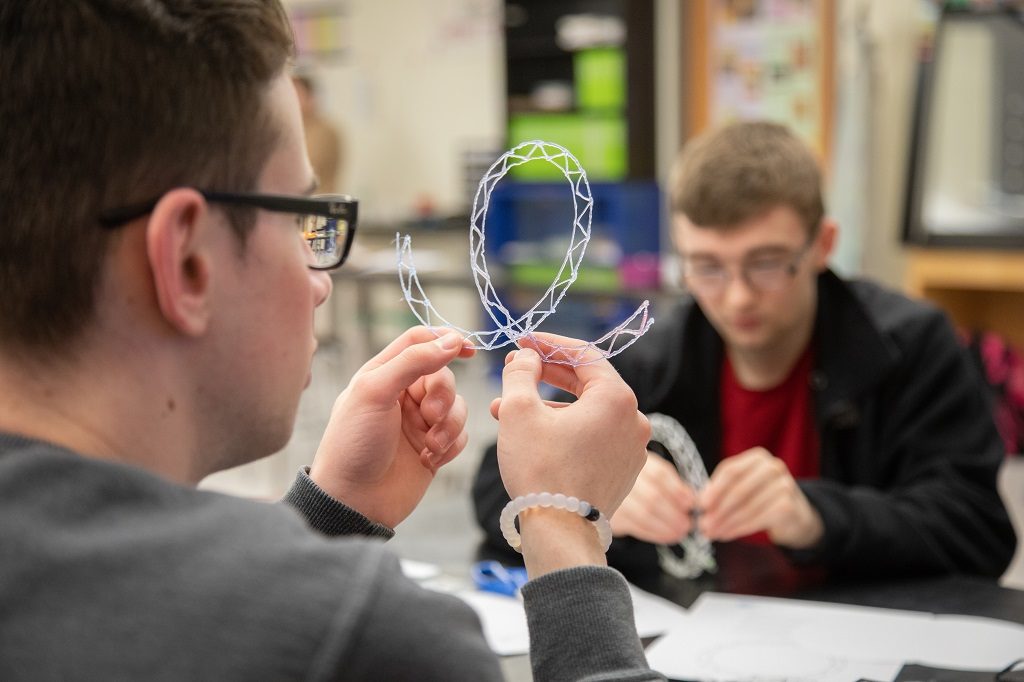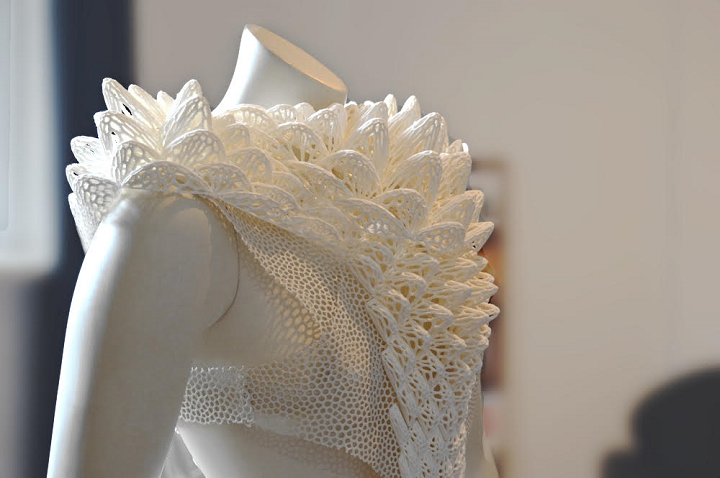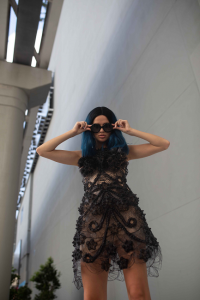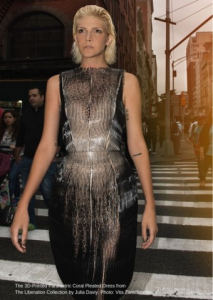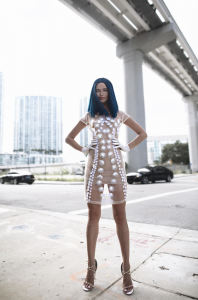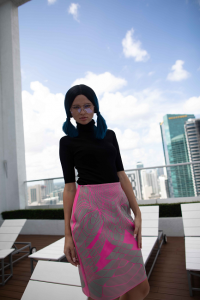The delicate wings of a butterfly have inspired a great deal of 3D-printed innovations, such as stronger structures for electronics and ultra lightweight geometries for better load bending, unique artwork, and even fashion. Pioneering 3D-printed fashion designer, architect, adjunct professor at UCLA, and, most recently, 3D-printed costume designer, Julia Körner has long used the technology in her work. Now, she has turned to 3D printing once again for the design of her eye-catching Setae Jacket, which was, as you may have guessed, inspired by butterfly wings.
“Julia Koerner is an award-winning Austrian designer working at the convergence of architecture, product and fashion design. She is internationally recognised for design innovation in 3D-Printing, Julia’s work stands out at the top of these disciplines,” her website states. “The constantly intriguing aspect of Julia’s work is its embodiment of a beautiful organic aesthetic.”
She was one of 15 designers chosen by non-profit organization Austrianfashion.net to show her work—the 3D printed Setae jacket—at its recent Virtual Design Festival (VDF). The organization is a platform that is focused on promoting contemporary Austrian fashion designers and partnered with VDF to exhibit innovative fashion designs and accessories by designers who were either born, or are currently based, in Austria, and also produce their work locally and sustainably.
Austrianfashion.net said, “[Körner’s] work on the future of 3D, as well as on its current applications, can be seen as revolutionary practice. Strongly believing that the future of fashion is 3D, Körner is making sure she is at the forefront of the revolution.”
Her beautiful, 3D-printed Setae Jacket is part of the 3D printed Chro-Morpho fashion design collection by Stratasys, which we’ve discussed here before, and was also inspired by colorful butterfly wings. The collection is meant to show how technology and textiles can work together, and even create commercially viable pieces of clothing. The jacket was 3D printed out of flexible Vero material on one of the company’s multimaterial printers, either the J750 or the J850, and every bristle resembles setae, which is a stiff structure akin to a hair or a bristle.
“The research explores digital setae pattern design and multi-color 3D printing on fabric, inspired by microscopic butterfly wing patterns. Butterfly wings are made up of membranes which are covered by thousands of colorful scales and hairs, plate-like setae,” Körner’s website states.
She used photographs of Madagascan Sunset Butterfly wings, and the setae on the wings were actually digitized into an algorithm, “which translates the color pixels into 3D bristle patterns which correspond to the form of the garment design.”
“The digital designs are 3D printed in an innovative way, without any support material and directly on fabric,” the site continues. “The relation between the colourful rigid setae and the flexible fabric create enigmatic visual effects when the garment is in motion.”
To form the jacket, the bristles were 3D printed on denim. When the garment is worn, the setae move along with the person, which is a really interesting effect.
“Due to the movement and delicate color transformation, it expresses a true organic animal flow that comes to life,” Stratasys states.
It is definitely a unique piece, and while lack of comfort and wearability is always one of my biggest critiques when it comes to 3D-printed fashion, the Setae Jacket absolutely looks wearable to me.
What do you think? Discuss this story and other 3D printing topics at 3DPrintBoard.com or share your thoughts in the comments below.
(Source: Dezeen / Image Credits: Ger Ger 2019)
The post Julia Körner’s 3D-Printed Setae Jacket Inspired by Butterfly Wings appeared first on 3DPrint.com | The Voice of 3D Printing / Additive Manufacturing.








